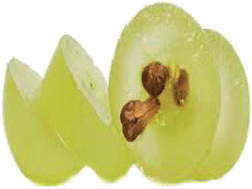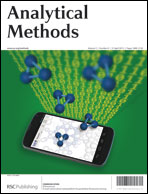Characterization of grape seed residues from the ethanol-distillation industry†
Abstract
The aim of the present research was to develop a fast and efficient extraction method for isolation of priced compounds from a raw material with very little value (waste from distillery industries which use the cake from red- and white-wine production) for their subsequent characterization. Superheated liquid extraction (SHLE) was the technique selected (and compared with conventional maceration extraction) to obtain the extracts which were characterized overall by the Folin–Ciocalteu (F–C) and Ferric Reducing Antioxidant Power (FRAP) tests. The extracts were analysed by LC-MS in high-resolution mode for qualitative comparison under different optimisation conditions. Identification of the extract components was conducted by open databases Plantcyc (http://www.plantcyc.org) and METLIN Personal Metabolite Database. F–C and FRAP tests reported that the extracts have a high overall concentration of phenols and a high antioxidant activity (3.4 and 2.7 mg GAE per mL extract for white and red grape seeds, respectively; 4.8 and 3.8 mg TROLOX per mL extract for white and red grape seeds, respectively). The variety of identified compounds in the extracts makes them exploitable as additives in the food industry (either as colorants, flavour modifiers or antioxidants), and in the cosmetics and nutraceutical industries. The relevance of SHL extraction variables has been emphasized with optimization studies.


 Please wait while we load your content...
Please wait while we load your content...